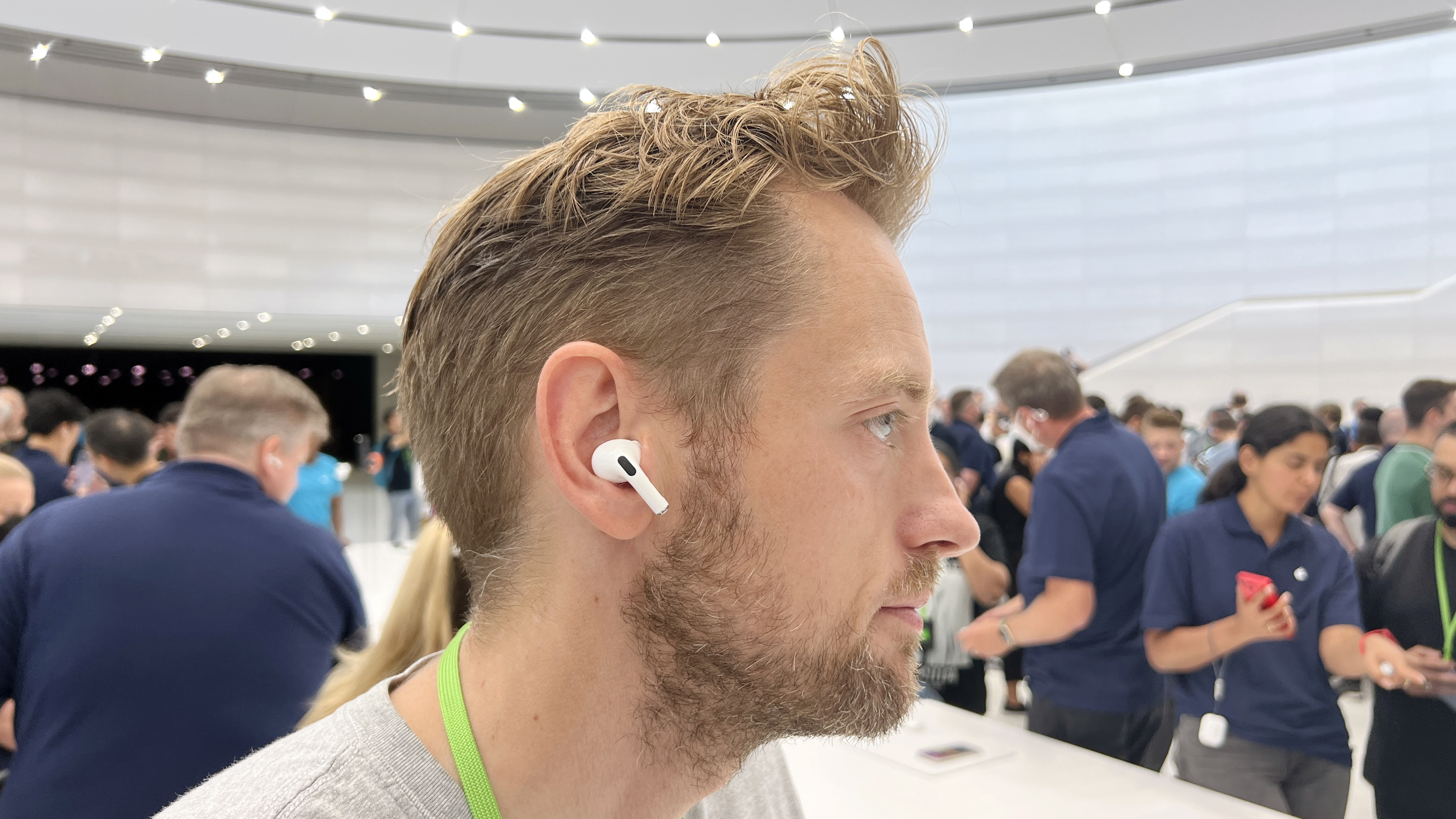Adaptive Transparency is the one feature that will make me buy AirPods Pro 2
Apple gets into ambient sound

The announcement of the AirPods Pro 2 at Apple’s iPhone- and Apple Watch-heavy September “Far Out” event came as something of a surprise given that the company typically unveils new AirPods later in the year. And while the new AirPods Pro 2 checks off several boxes on our list of anticipated upgrades, it has one new feature I didn’t expect: Adaptive Transparency.
An ambient sound mode like the AirPods Pro 2’s Adaptive Transparency is a feature found in some of the best headphones, and one that serves the exact opposite function as noise cancellation by allowing external sound in instead of keeping noise out.
The reason why that feature is important is because wireless earbuds like the AirPods Pro 2 already add a level of passive noise suppression by simply being inserted in your ear canal. When this is combined with active noise cancellation, you can almost literally block out a full spectrum of external sound – something advanced models like the new Bose QuietComfort Earbuds II do incredibly well. For a situation like commuting, office work, or exercising at a gym, that can be a wondrous thing, leaving you with just your music, fully isolated from noise.
But there are times where you’d want to hear what’s going on around you, even as you listen to music, internet radio, or a podcast. Walking in a crowded urban environment, waiting for your boarding time to be announced at the airport – in these and plenty of other situations, letting external sound pass through your earbuds, or even amplifying it, makes good sense.
That’s why I was intrigued to learn about Adaptive Transparency at Apple’s Far Out event. While we didn’t get a chance to properly evaluate it in our hands on test of the AirPods Pro 2, this feature, which taps the power of Apple’s new H2 chip to process sound at a 48,000 times per second rate, is said to be able to reduce or boost ambient noise on a dynamic basis.
While Apple’s basic overview of the tech mainly touted its ability to block out sounds like sirens and power tools – noises one would normally encounter even during a brief outing in a city like New York – I could also see it boosting sounds like voices, or of footsteps or vehicles coming from behind you. Getting to hear all of that when walking through the world with earbuds plugged in has both positive social and safety implications – and with Adaptive Transparency you wouldn’t have to pause or even turn down your music.

Ambient sound: noise cancellation’s sensible flip side
The two-times noise cancellation increase over the AirPods Pro (2019) that Apple says its new H2 chip delivers – a claim verified for the most part in our AirPods Pro 2 hands on review – is undoubtedly impressive. But that’s only one of the Apple earbuds’ many upgrades and new features along with Adaptive Transparency.
My go-to wireless earbuds are the Technics EAH-AZ60, a model that strikes a fantastic balance between high-quality music playback and noise-cancelling finesse. With 6 bundled eartip options, it also has the most secure fit of any earbuds I’ve tried. The AZ60 has a Natural Ambient sound mode, and this is a feature that, after first ignoring it, I’ve come to depend on as much as ANC.
I mainly use my Technics’ earbuds for travel and the gym, and having the ability to switch between noise cancelling and ambient sound modes with a quick press on the earbuds’ surface helps me to navigate spaces with both noise isolation and safety in mind. I regularly see people walking through city streets, or even riding bicycles, wearing earbuds. And when that happens, I must admit to experiencing a pang of worry that they don’t have adequate awareness of what’s going on around them.
The Audio Connect app for Technics' earbuds offers basic controls to adjust the level of ambient noise transparency from 0 to 100%, and there is also an Attention mode that narrows external sound to just the vocal range. Those are both great features, but there is no processing to dynamically boost and reduce ambient noise levels in the same way that Apple’s H2 chip-powered Adaptive Transparency mode is supposed to work.
Upgrading my earbuds to the AirPods Pro 2, and getting to use its Adaptive Transparency mode, might finally give me the courage to walk through cities and other congested spaces wearing earbuds. As much as I love listening to music, I’m a safety-first type. But the high level of auditory awareness plus noise protection that Adaptive Transparency promises might just just put my mind at ease about that. Who knows, I may even end up wearing AirPods Pro 2 while riding a bike.
Get daily insight, inspiration and deals in your inbox
Sign up for breaking news, reviews, opinion, top tech deals, and more.

Al Griffin has been writing about and reviewing A/V tech since the days LaserDiscs roamed the earth, and was previously the editor of Sound & Vision magazine.
When not reviewing the latest and greatest gear or watching movies at home, he can usually be found out and about on a bike.